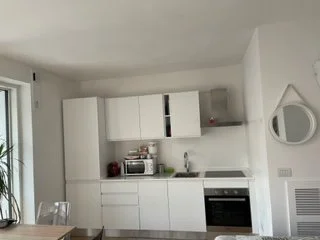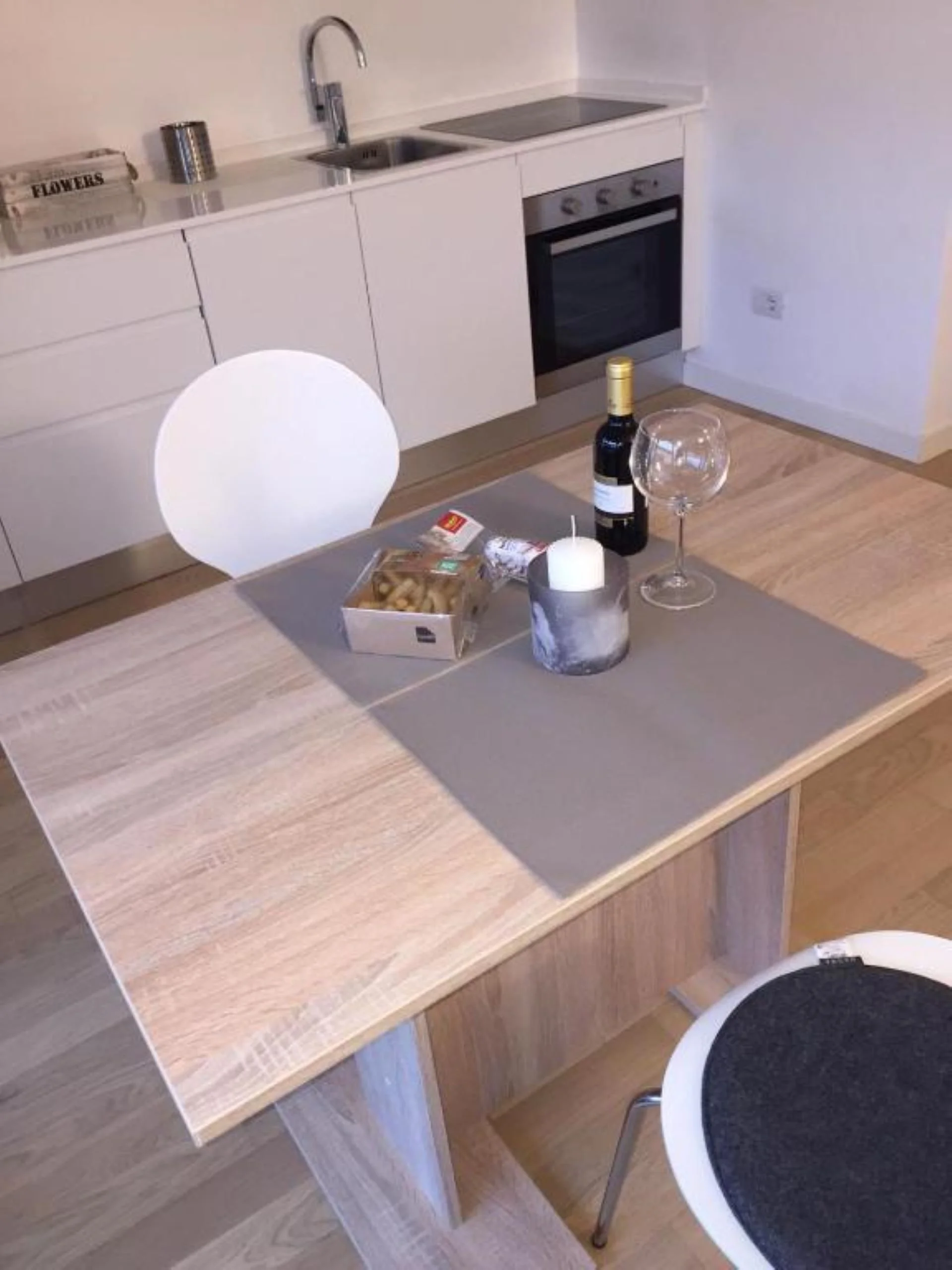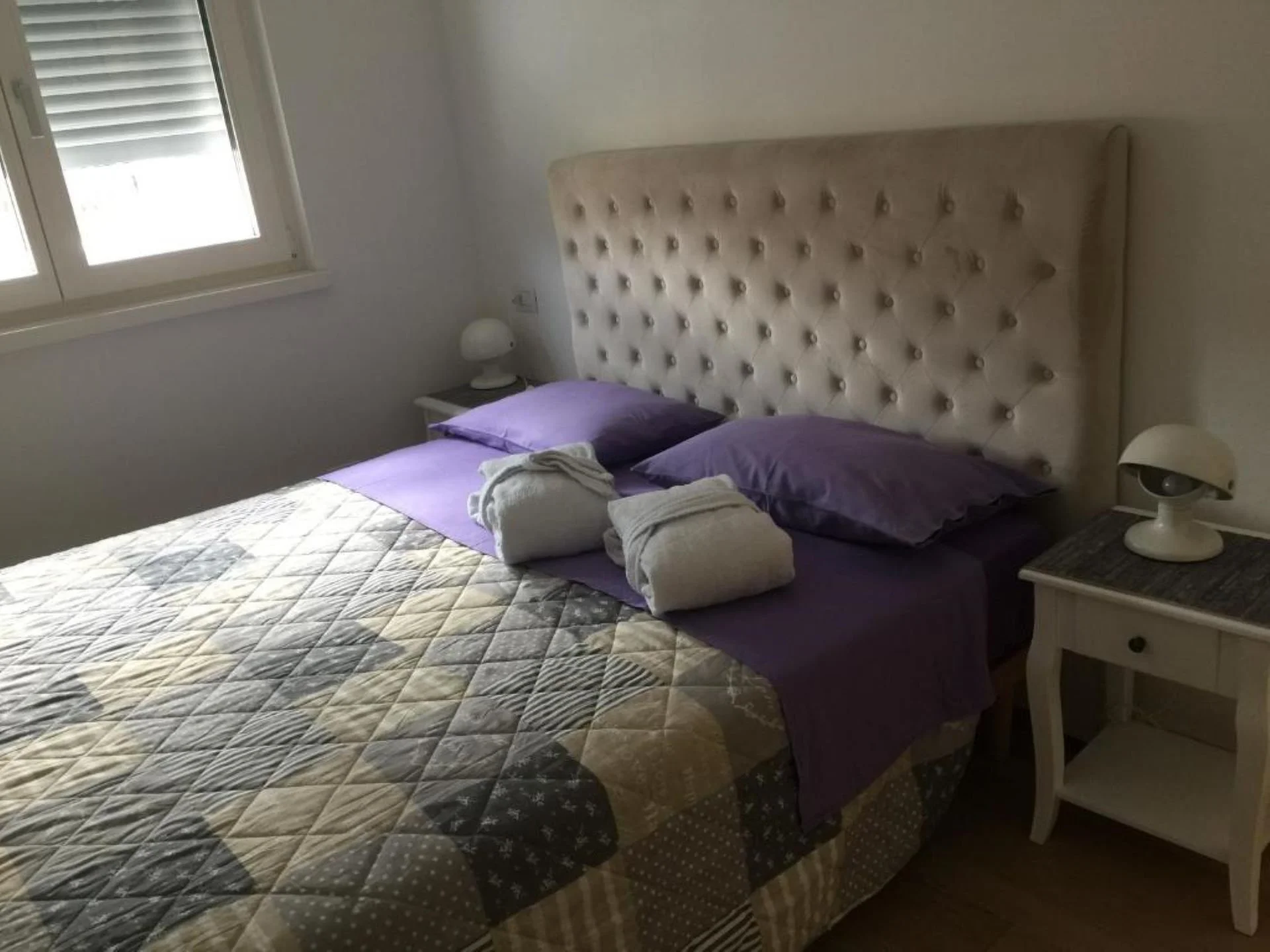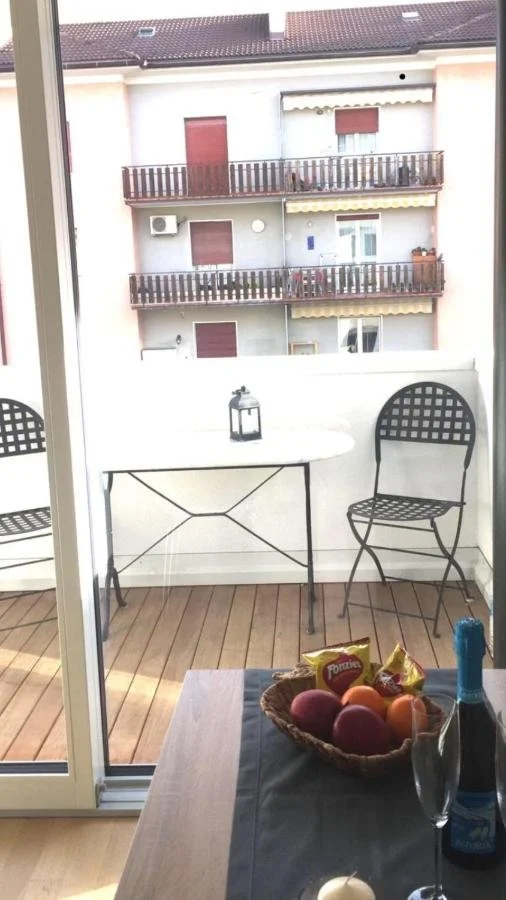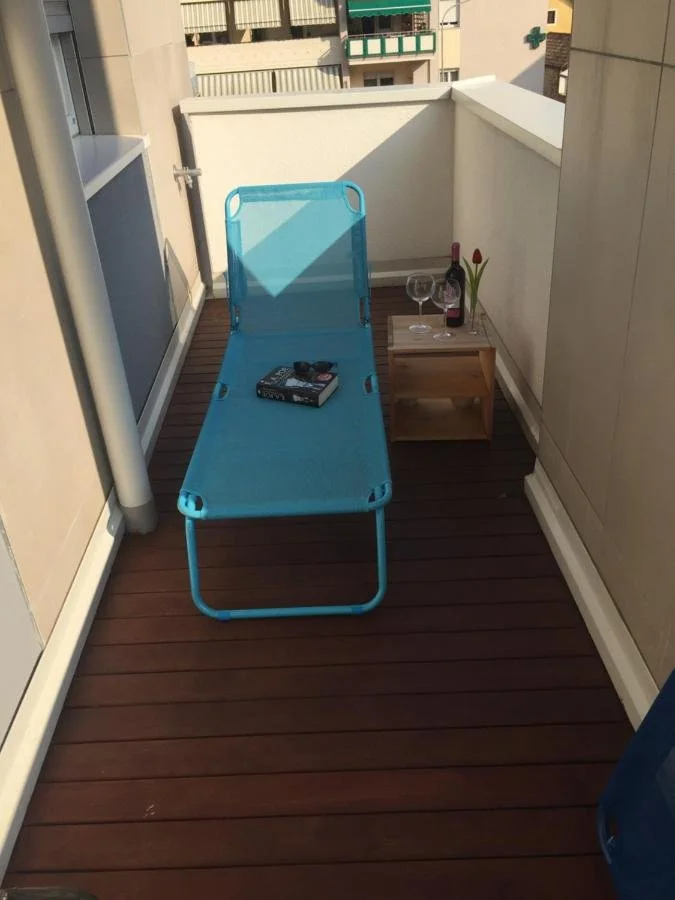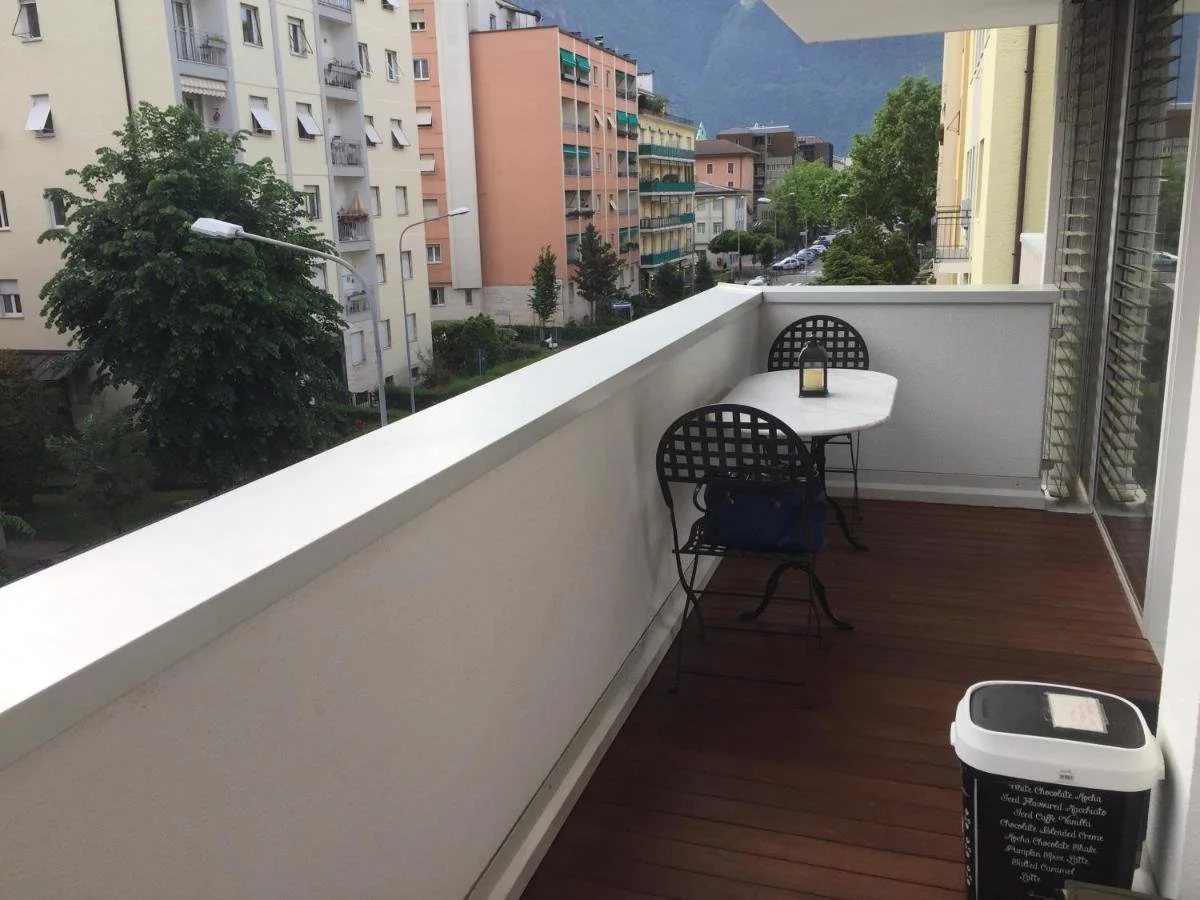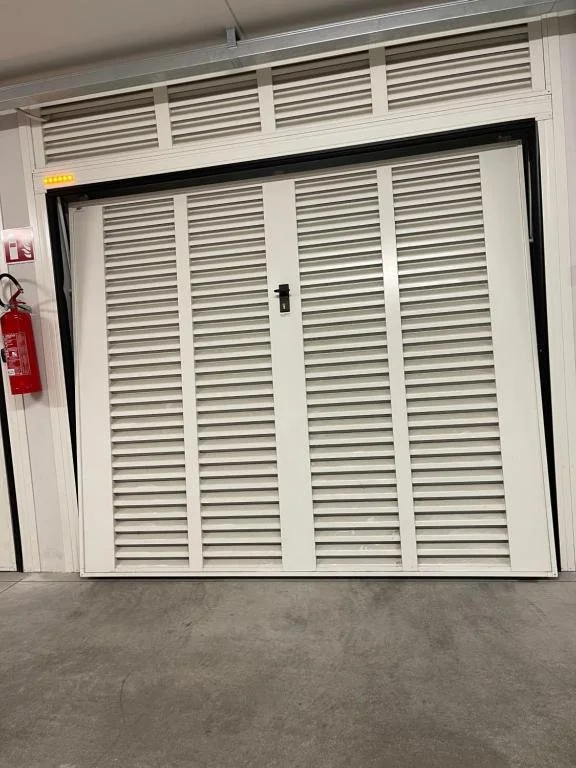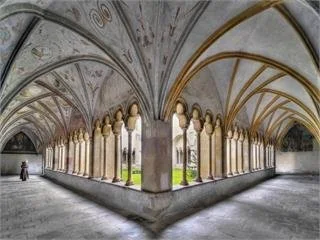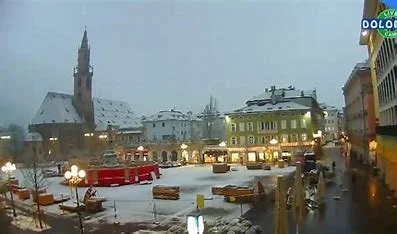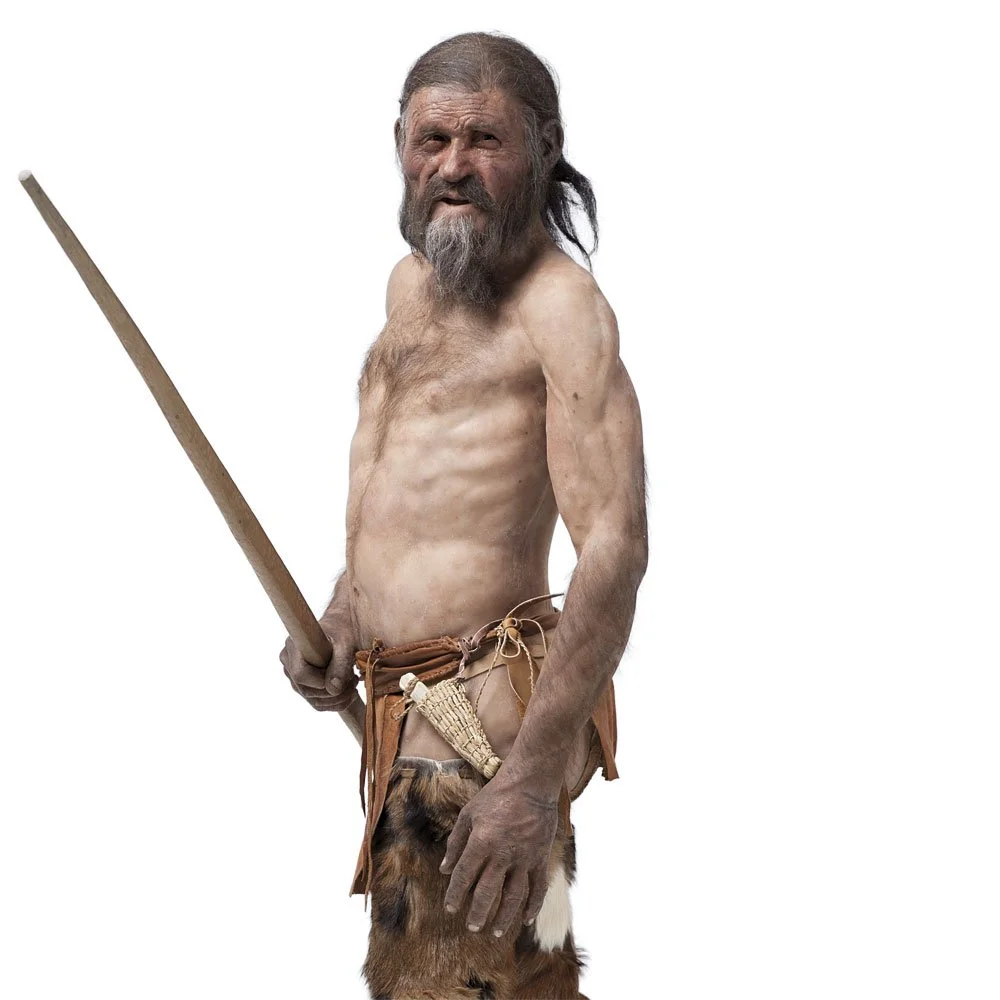The Ligeia flat is located in the lively district of Gries, just a 10-minute walk from Bolzano's historic centre.
-
Underfloor heating and cooling provide thermal comfort in every season
Convenient electric shutters are operated at the touch of a button
Controlled humidity and air exchange regulated according to environmental conditions
The Ligeia flat can accommodate up to three people and has a double bedroom, a large, bright living room with a comfortable sofa bed and a fully equipped kitchen, as well as a cosy bathroom and a large balcony, where you can dine outdoors in the summer months.
-
fridge, cooker, oven
coffee maker, kettle, microwave oven
dishwasher, iron and washing machine
SAT-TV, Wi-Fi
towels, bed linen
A large garage allows for safe parking and direct access to the flat by stairs or lift.
-
there are coffes, pastry shops, restaurants, a few supermarkets and a pharmacy.
Bus stops no. 5 and no. 10 are within walking distance.
You can also stroll around the Gries square and be surprised by the small late-Gothic church of Our Lady of Gries and the historic cemetery that surrounds it.
Over the years, the history, culture and traditions of Bolzano have defined what the city's character is today: lively, polyglot, constantly evolving. An immersion in a unique cultural environment, a meeting of Mediterranean and Alpine .
〰️
Over the years, the history, culture and traditions of Bolzano have defined what the city's character is today: lively, polyglot, constantly evolving. An immersion in a unique cultural environment, a meeting of Mediterranean and Alpine . 〰️
-
Bolzano was founded as a Roman control post in 15 B.C. under the name 'Pons Drusi'. In the following centuries it was invaded by Visigoths, Ostrogoths, Huns, Lombards, Saracens, Normans and Hungarians until the Counts of Tyrol in the 13th century.
Via dei Portici, built in the 12th century, was the first street in Bolzano and is still the heart of the mercantile city today. Outside the city walls stood the early Christian church, which later became today's cathedral.
In 1363 the county was ceded to the Habsburgs who ruled until 1806 when Tyrol became part of the Kingdom of Bavaria, at that time allied with Napoleonic France. In 1814 the Tyrol returned to Austria and in 1919 the southern part of the Tyrol, i.e. South Tyrol, was annexed to Italy with the Treaty of Saint Germain.
Fascist Italianisation from 1935 radically changed the appearance of Bolzano, expanding it southwards into the new 'Semirurali' districts and the industrial area where previously there were only vineyards and orchards.
-
A cot with bed linen, a high chair and a potty as well as their own crockery are available for small children.
Children up to the age of 12 are accommodated free of charge





